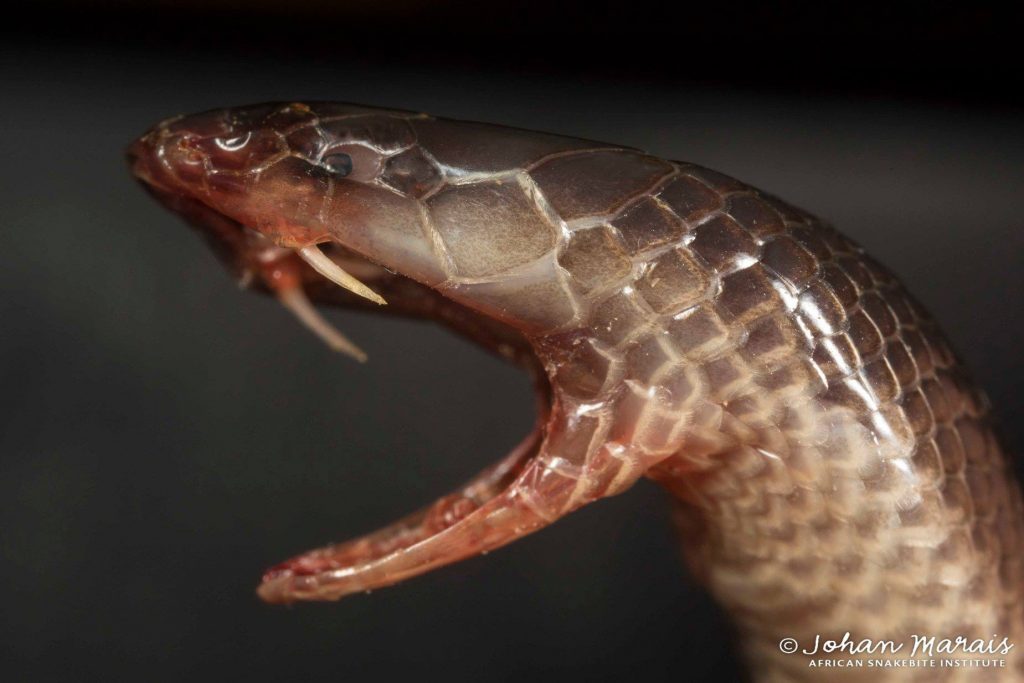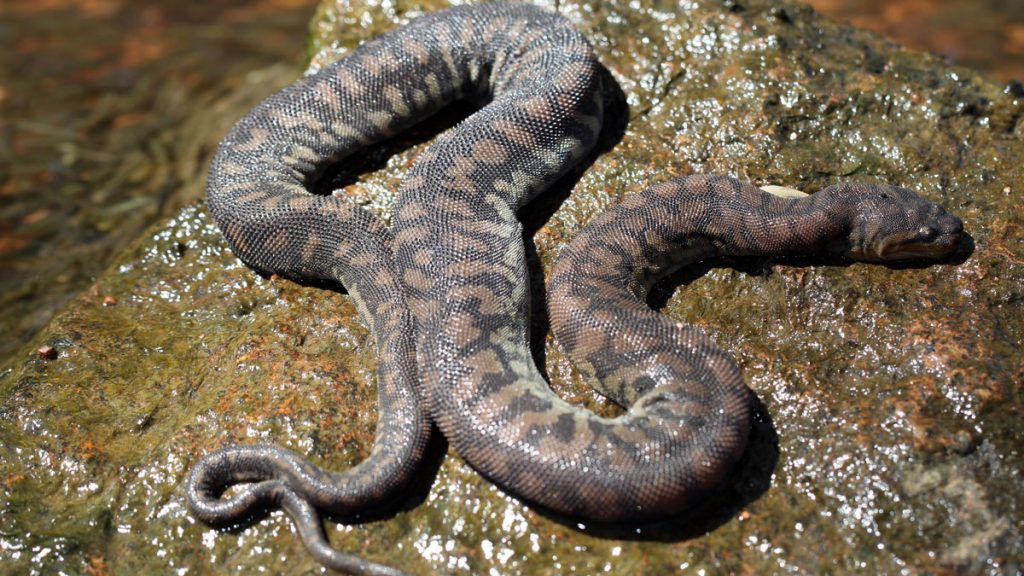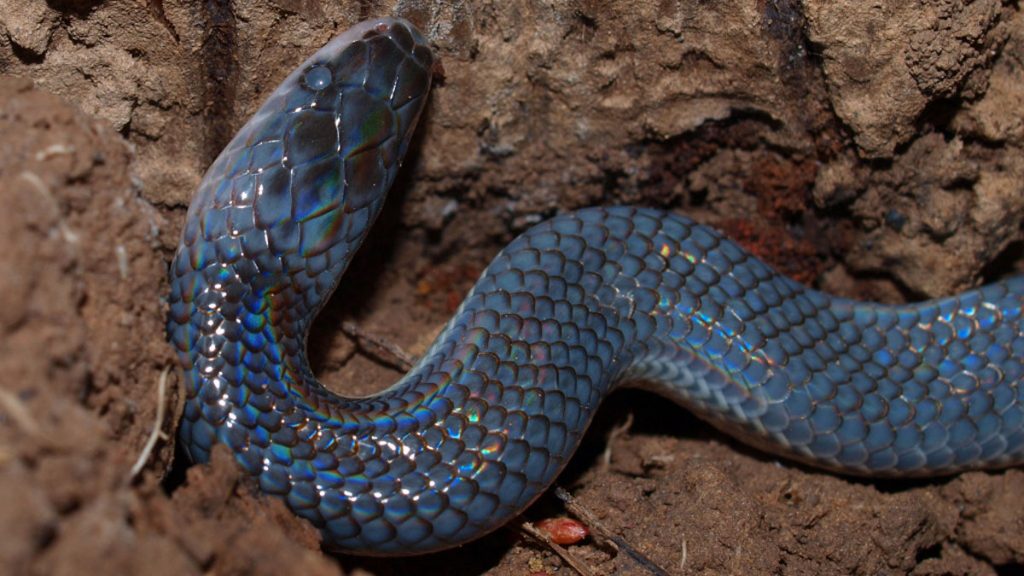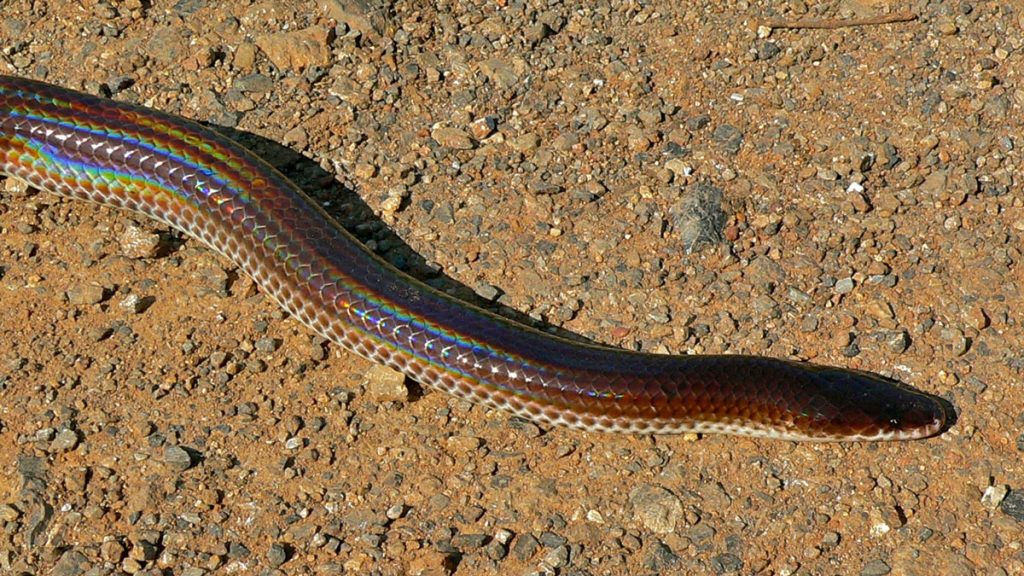When it comes to snakes, most of the attention goes to highly venomous varieties (like cobras and vipers) and constrictors (like boas and pythons.) This makes sense since many of these species are either quite dangerous to humans or, at least, perceived to be. But there’s a remarkable diversity of snakes and their lifestyles—and some of them are flat-out strange.
There are about 3,600 species of snake, and very few of them are anything like the most famous and feared examples, which only represent a fraction of modern snake families. There are stocky, lie-in-wait ambush hunters that lure in foolish prey with a tail wriggling like a worm (Australia’s death adder) or a spider (like the spider-tailed viper). Some, like the Eastern hognose snake, are overdramatic fakers when faced with harassment, preferring to play dead than bite back. Some snakes can even glide between treetops, coasting through the air like a party streamer blown in the wind.
But these aren’t the weirdest snakes on Earth. Not even close.

Face-Shanking Tunnelers
Snakes in the subfamily Atractaspidinae go by many names, including “mole vipers” and “burrowing asps.” Both monikers point to their lifestyle, which includes plowing through the dry, hot soil of Africa and the Middle East. Many other snakes are adapted for a burrowing lifestyle; that’s not unusual. It’s these snakes’ other, more jarring name that reveals their weirdness: “stiletto snakes.”
Stiletto snakes are so named for their incredible fangs, which are proportionally massive —nearly half as long their own skull. Unlike any other snake, stiletto snakes have a ball-and-socket joint in their jaw instead of the customary hinge joint. This allows their huge fangs to swivel towards the sides of the head, sticking sideways out of an opening in the mouth. By exposing their fangs this way, the snakes can stab prey without even opening their mouths, shanking their victims with a thrash of their hidden “stiletto” fangs.
These secret shivs are hooked up to monstrously oversized venom glands, so long that they actually extend past the head and down into the neck. Many stiletto snakes are pretty small, and their “bites” can’t easily envenomate humans. But larger, longer-fanged species do so on occasion — and while rarely deadly, the venom causes horrible effects, including swelling and extreme pain. It’s these symptoms that have certainly inspired some of the stiletto snake’s more intense, ominous names in places like Sudan, where it’s known as the “father of blackness” and the “shroud bearer.”
The jury’s still out on why stiletto snakes’ fangs are so strange. It may be related to their life underground, allowing them to envenomate prey in close quarters more easily, but it’s not entirely clear exactly how that would work. For now, there are plenty of unanswered questions on how such strange fang modifications evolved in the first place.

All the Better to Sense You With
Erpeton tentaculatum loves the water. In fact, this species of snake has evolved to spend almost all of its time in ponds and lakes, making it awkward and clumsy while trying to move on land. Like many other water-based snakes, it subsists entirely on fish. But unlike all other snakes, it has a secret weapon: a pair of creepy, finger-like tentacles wagging around on its upper lip.
Behold, the aptly-named tentacled snake, found in muggy, tropical lowlands in Southeast Asia. Tentacled snakes live and hunt in murky water, so cloudy that their own eyes are often useless at spotting prey. This is where the tentacles come in. They’re hypersensitive to motion in the water, detecting the slightest vibrations from nearby fish. This is particularly useful when hunting, because unlike most aquatic snakes, tentacled snakes are ambush predators, lazily waiting for prey to come to them.
These small snakes curl into the shape of a question mark and wait for a fish to hover close to their perfectly motionless head. Fish typically have reflexes that are too quick for predators to match, immediately flexing into a C-shape (a “C-start”) and darting away at the first hint of danger. But ol’ Erpeton has a trick up its unsettling, scaly mustache. It hacks the fish’s go-to response, shuddering a piece of its tail or body near the fish, causing it to flee towards the snake’s head, not away from it. Using its sensitive tentacles, the snake senses the movement, anticipates where the fish is going, and in a lightning flash, intercepts its meal.

Get a Grip
Snakes in the family Acrochordidae are adapted to a watery existence as well, but they take it to a freakish extreme. The three species of acrochordid snake alive today don’t even have the belly scales that most other snakes use to pull themselves along on land, and they can stay underwater for hours at a time. They have eyes on the tops of their head like a crocodile, and slowly prowl the waterways of mangroves and sleepy rivers throughout northern Australia and Southeast Asia, gobbling down fish. Some of these fish can be pretty big, considering that one species can grow to eight feet long and weigh twenty pounds.
It’s their piscivorous (fish-eating) habit that’s thought to drive their weirdest characteristic—their skin. Acrochordids are more commonly called wart snakes, elephant trunk snakes, or file snakes, all in reference to their unusual, ridged scales and baggy skin. It’s incredibly rough and wrinkly, and makes them look like they’ve been wrapped in a sock made of sandpaper.
File snakes are thought to use their droopy, abrasive folds to hold onto slippery fish underwater, coiling around them once snagged with their fangs. File snakes have an exceptionally slow metabolism, even among snakes, and live sluggish, slow-growing lives mostly underwater. Having the physical energy on demand to battle a struggling fish may be a rare event, making that combo of gripping scales and pliable skin crucial for a successful hunt.
Their hunting is also aided by unique tiny organs in their skin (and the scales themselves) that help them sense the smallest perturbations in the water. No other snake has a motion detection system like this, and it’s more akin to the types of sensors that fish and amphibians have for immediately feeling vibrations through the water.

The Rainbow Wriggler
There are just two species in the snake family Xenopeltidae, commonly known as sunbeam snakes. The snakes, native to Southeast Asia and southern China, aren’t like the other snakes on this list, as their “weirdness” has nothing to do with how they live, and everything to do with how they look. Sunbeam snakes are so named for what happens when strong sunlight hits their normally dark, glossy scales. Brilliant rainbow iridescence shimmers up and down their sleek bodies, making them look less like Earthly reptiles and more like some sort of mythical, supernatural creature.
The beautiful display of color on the scales seem even more special when you consider that sunbeam snakes—being burrowers like stiletto snakes—hide themselves and their rainbow colors in the dark underground most of their lives.

Sunbeam snakes also have an odd pedigree. Genetic studies have revealed they come from a very primitive place in the snake family tree, likely being related to the now-extinct common ancestor of boas and pythons.
Like many of these featured slitherers, sunbeam snakes have been successfully making their lives on Earth for tens of millions of years. For these snakes, being weirder than their more well-known relatives hasn’t hobbled their prosperity; it has paid dividends.




